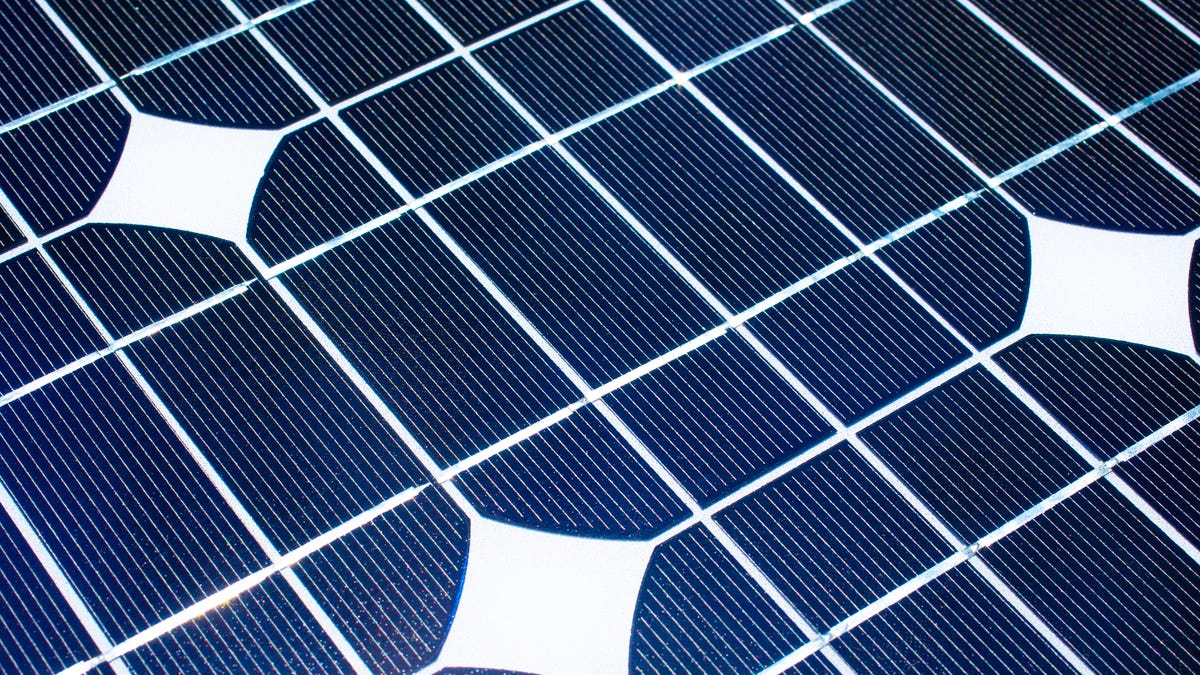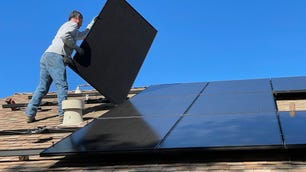How to Calculate When Your Solar Panels Will Pay for Themselves

Solar panels can cost tens of thousands of dollars up front or spread out in monthly payments. The breakeven point, or payback period, is the time it takes to recoup the cost from the initial investment. Once that time is up, the real savings start.
There are a lot of reasons to think about getting solar panels. You might, like many Americans, want to help the environment by avoiding fossil fuels. Perhaps you want to protect your home from blackouts. Or you might just want to stop paying for electricity.
“Solar is what’s coming, in terms of how we start powering our homes, how we connect as a community to support energy needs within our community,” Jamie Haenggi, president of ADT Solar, told CNET.
Can solar panels save you money?
Interested in understanding the impact solar can have on your home? Enter some basic information below, and we’ll instantly provide a free estimate of your energy savings.
But solar panels are expensive, and you need to consider how long it’ll take for the savings you earn from solar power to outweigh what you paid to put the panels on your roof. Before you invite a crew of solar installers over, you’ll want to understand when — or if — the panels will start to pay for themselves.
Here’s your guide to how long it takes for you to start saving money with solar panels.
What’s a solar panel payback period?
A “solar payback period” is a fancy way of talking about how long it takes for the money you spent to be outweighed by the money you’re saving (or earning) on your electricity bill.
It’s a key number — usually a matter of years — that tells you how long you’ll wait to see a real return on your investment. Solar payback periods can vary widely, and also depend on how you pay for the system in the first place.
“There’s a lot of factors that play into that for any given home or household,” said Becca Jones-Albertus, director of the US Department of Energy Solar Energy Technologies Office.
Haenggi from ADT Solar said an average payback period in the US is six to 12 years, with most households leaning closer to the latter. Like Jones-Albertus, she emphasized that it’s a moving target.
“People are reluctant to say, ‘Well here’s the payback,’ because the energy market has been so volatile,” Haenggi said.
How to calculate your solar payback period
If you want to get a rough idea of your potential solar payback period, here’s a way to do it. Keep in mind, you’ll want to consult the experts (read: solar installers) to make sure you have accurate numbers here. But this can help you get an idea:
- Start with the total cost to install solar on your home. (Be sure to consider interest and fees if you’re taking out a loan.)
- Then, subtract the value of any rebates, incentives or tax credits.
- Now you have the net cost of your solar system, after discounts.
- Estimate your annual electricity bill savings with solar panels. (Again, your solar installer or utility provider might be able to help here.)
- Divide the net cost of the system by the annual bill savings.
- The number you end up with is the number of years it will take for your panels to “pay for themselves.”
Here’s another look at the formula: (Total solar system costs – rebates) / Electricity bill savings per year = Payback period in years
In practice, here’s what that could look like: Let’s say the total system cost for your home is $25,000. You know you qualify for $10,000 in incentives, so now the net cost is $15,000. You also know the panels will help you save about $1,500 a year on electricity bills. So, $15,000 divided by $1,500 is 10. That means your solar payback period is 10 years.
Factors that influence your solar payback period
No two solar systems are the same, and that means no two solar payback periods are the same, either. “It seems like an easy answer, but it’s more complicated,” Haenggi said.
Calculating your potential payback period will depend on a lot of variables.
Total solar system cost
The more you pay for your system, the longer it’s going to take to recoup your costs. Solar systems can range in price from a few thousand dollars to tens of thousands, depending on where you live, your electricity needs and what type of system you choose to install. A solar battery could easily increase the cost of your system by $10,000 or more. It goes without saying: The steeper the price, the longer the payback period.
Here’s a look at how much solar panel systems cost on average for most states, according to data from FindEnergy.com.
Incentives and tax credits
Once you know the total cost of your solar system, you also have to factor in any state or federal rebates you might qualify for. The federal residential clean energy credit, for example, gives you 30% back. Your state might also have additional incentives. Those credits can lop off a significant chunk of the money you pay for solar panels, making your payback period shorter.
Your home’s energy consumption
Sometimes rooftop solar can completely cover your electricity needs — reducing your utility bill to $0 — and sometimes it only covers a portion of it. If you consume a lot of electricity, solar might only translate to a small reduction in your electricity costs, which means it could take longer for you to see a return on your investment. That’s why it’s important to think about your home’s energy efficiency before you consider solar panels — you can save money on energy and get a smaller solar panel system.
Electricity production of your solar system
You probably never thought much about your roof, but it makes a big difference in how your solar investment will play out. If your roof has room for lots of panels that soak in the sun all day, you’ll produce a ton of electricity, and see a quicker payback. But if you live on a shady lot, and your panels’ production is more intermittent, you won’t see a payback quite as quickly.
Cost of electricity and rate of increase
This is a huge, but sometimes overlooked, factor in the solar payback period. Basically, the higher the electricity rates where you live, the more lucrative solar can be for you. That’s because, as utility rates increase, you save more money by relying on your solar panels instead of drawing power from the grid.
Solar panels and electric vehicle charging could be a useful pairing.
Why knowing your payback period is important
Now you have your solar payback period. But how does that factor into your decision?
“It depends on what is motivating the household to make the decision to [install] solar,” Jones-Albertus said. Maybe you just want to help the environment, and aren’t worried about the costs. But “folks are interested in the resilience aspect and the economic aspect, as well,” she said.
If you are interested in the financial aspect, then the payback period is an important number for your decision making. A payback period around 10 years, give or take, is pretty average, and could end up being a solid investment, Haenggi said.
But again, it depends on your goals and your comfort level. If you’re planning on moving or selling your home in the near term, for example, that changes the calculus. You might not be in the home to see the payback in the form of electricity savings, but you could see a payoff in a higher sale price for your home.
“That system on your roof does translate to an increase in property value,” Jones-Albertus said.
There are few scenarios, Jones-Albertus and Haenggi agree, when installing solar probably doesn’t make sense, no matter the payback period. If you know your roof will need to be replaced soon, you’ll definitely want to wait until that is done before you install solar panels on top of it. And if you have a ton of trees looming over your home, a solar system is unlikely to ever generate a significant return; in that case, Jones-Albertus recommends considering community solar.
How to pay for solar panels
There are a lot of different ways to pay for solar panels, and they all affect the solar payback period.
- Cash: If you simply save up for the purchase (using a high-yield savings account, for example), you’ll avoid paying any loan interest, and reduce the overall cost of solar panels. “In the long run, typically the highest rate of return comes from paying for cash for a system,” Jones-Albertus said.
- Solar loan: Some banks offer loans specifically designed to fund solar installations. Check in with your installer or with lenders to see what the options are.
- Home equity loan or line of credit, aka HELOC: Generally speaking, using the equity in your home to fund home improvements can be a solid idea — especially because solar panels will increase the value of your home.
- Lease or power purchase agreement: If you want to minimize the upfront investment in solar, you could actually lease the system from the installer. The developer would own the panels, and would sell you the electricity generated at a reduced rate, basically negating the idea of a “payback period” all together.
Source: CNET













